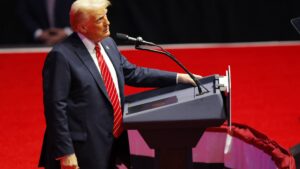Navigating Trump’s Trade Policies: What to Expect in 2025
As the administrative landscape shifts with President-elect Donald Trump preparing for his second inauguration, the financial world is keenly watching his next moves, particularly regarding trade policies. Already, analysts are hypothesizing about the implications of his proposed actions, offering insights into how these decisions may influence the economy. Here at Extreme Investor Network, we pride ourselves on examining these developments closely and dissecting their potential impact on your investment strategies.
A Focus on Fair Trade Practices
While Trump is expected to sign numerous executive orders upon taking office, the announcement of sweeping tariffs on U.S. trading partners appears to be delayed, according to the Wall Street Journal. Instead, he’ll launch a comprehensive trade memorandum directing federal agencies to assess unfair trade practices and currency policies, with a particular focus on nations like China, Canada, and Mexico.
This approach marks a notable shift from the aggressive tariff strategy that defined his campaign. Rather than imposing immediate penalties, Trump intends to initiate a thorough review of existing practices, making it clear that he values a more deliberative process in crafting trade policy. This may reflect a recognition of the increasingly interconnected global economy and the complexities involved in tariff imposition.
The Evolving Tariff Strategy
Recent discussions within Trump’s camp have hinted at a more nuanced approach to tariffs, one that potentially includes a system of graduated tariffs increasing by 2% to 5% monthly. This is a departure from earlier rhetoric that suggested blanket tariffs, particularly a drastic 20% on all imports and an even steeper 60% on Chinese goods.
This evolution indicates a possible attempt by the administration to balance the need to protect American jobs and industries with the risks of inflating consumer prices. Economists have voiced concerns that aggressive protectionist policies could lead to higher costs for goods and disrupt the recovery trajectory of an economy still healing from pandemic-driven inflation.
Implications for Investors
As the Trump administration embarks on this recalibrated trade policy, investors should remain vigilant. Understanding the potential shifts in trade dynamics will be critical for making informed decisions in the markets.
-
Sector Impacts: Industries heavily reliant on imports or exports, such as technology, manufacturing, and agriculture, may experience volatility based on new trade policies. Investors should monitor trade agreements closely.
-
Currency Fluctuations: Changes in tariff policies can lead to reactions in currency markets. The value of the U.S. dollar could adjust as a response to trade negotiations and outcomes, impacting exchange rates and international investments.
- Long-Term Strategies: While short-term reactions to policy announcements can create market fluctuations, focusing on long-term investment strategies remains crucial. Assess how these trade changes align with global economic trends and consumer behavior.
As we navigate these uncharted waters, Extreme Investor Network will continue to provide top-tier insights into how political developments affect the broader economic landscape. Stay tuned as we analyze the ramifications of Trump’s trade policies and what they mean for your investments!
For more updates and analyses, subscribe to our newsletter and join our community of savvy investors. Together, we can turn uncertainty into opportunity.

